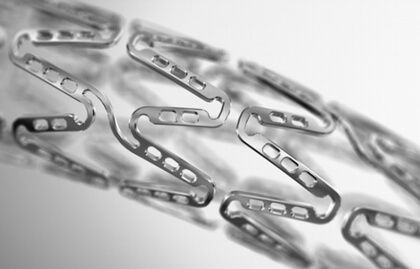In this large randomized trial, there were significant differences as regards both target-lesion failure and target-vessel-related infarction, which persisted through a 2-year follow-up and favored treatment with an ultrathin-strut bioresorbable-polymer sirolimus-eluting stent (Orsiro) compared with the gold standard, a durable-polymer everolimus-eluting stent (Xience).

This study sought to compare long-term clinical events with an ultrathin-strut (60 µm) bioresorbable-polymer sirolimus-eluting stent vs. a thin-strut (81 µm) durable-polymer everolimus-eluting stent.
BIOFLOW V (Biotronik Prospective Randomized Multicenter Study to Assess the Safety and Effectiveness ofthe Orsiro Sirolimus Eluting Coronary Stent System in the Treatment of Subjects with Up to Three De Novo or RestenoticCoronary Artery Lesions V) was an international randomized trial comparing both devices regarding the primary endpoint of 12-month target lesion failure. It already included an analysis of pre-specified 2-year clinical events.
Read also: Balloon-Expandable vs. Self-Expanding: To Each Valve Its Own Annulus.
A total of 1334 patients were randomized; 884 received Orsiro and 450 received Xience. The primary endpoint (target-lesion failure) was 7.5% for Orsiro and 11.9% for Xience (p = 0.015), basically driven by a wide difference in the rate of target-vessel-related infarction (5.3% vs. 9.5%; p = 0.01) and ischemia-driven revascularization (2.6% vs. 4.9%; p = 0.04).
The rates of death and infarction were 7% vs. 10.4% (p = 0.047), always favoring Orsiro.
Late/very late definite thrombosis was also lower with the new device (p = 0.045).
Read also: Vascular Surgeons of the Future in the Endovascular Era.
Given prior evidence, these differences seem to derive from strut width (60 µm vs. 81 µm), as opposed to the drug or the polymer. This appears to be the way for new stents to overcome the plateau where we have spent these last years.
Original title: Ultrathin Bioresorbable Polymer Sirolimus-Eluting Stents Versus Thin Durable Polymer Everolimus-Eluting Stents. The BIOFLOW V Investigators.
Reference: David E. Kandzari et al. J Am Coll Cardiol 2018;72:3287-97.
Subscribe to our weekly newsletter
Get the latest scientific articles on interventional cardiology
We are interested in your opinion. Please, leave your comments, thoughts, questions, etc., below. They will be most welcome.





